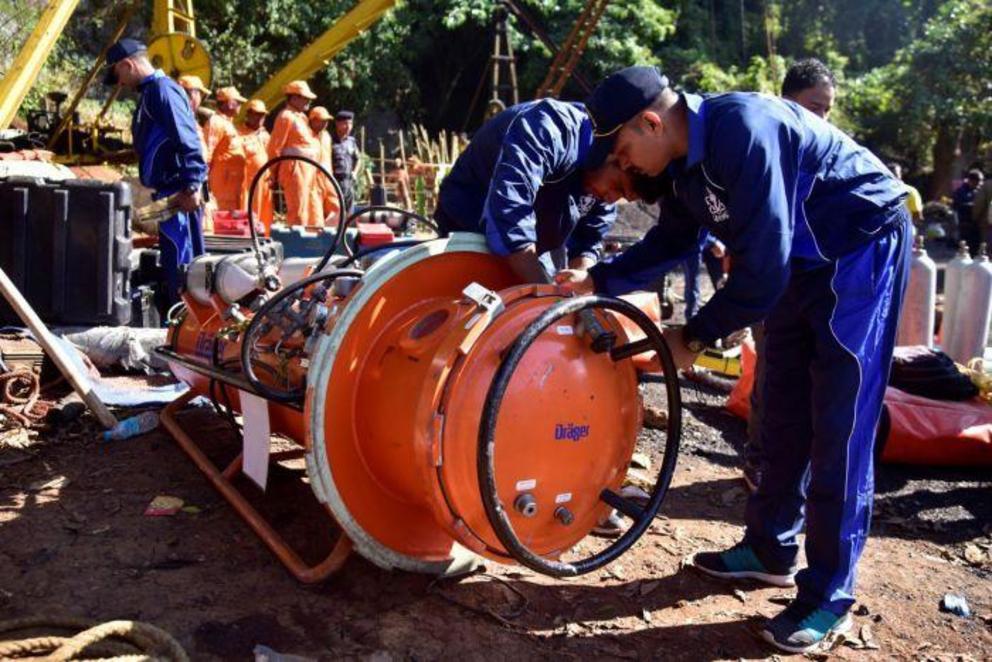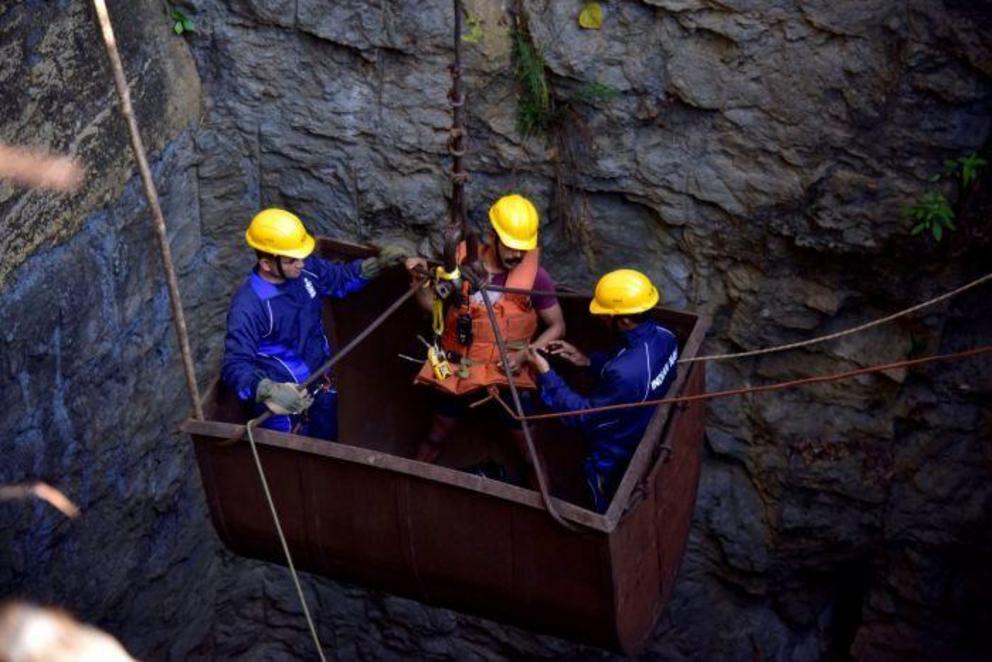The cave rescue you didn't hear about — and its tragic outcome
Rescue crews, pictured here on December 29, worked to reach the miners but to no avail.
Indian authorities have recovered one body from a flooded mine shaft where 15 miners were trapped in the northern state of Meghalaya last month.
Key points:
- Fifteen workers were trapped in the mine when it flooded on December 13
- The Indian navy discovered one body in the flooded shaft on January 17
- Rat-hole mining is an illegal practice that is still very common in India and claims thousands of lives
For 40 days loved ones hoped for good news, but there was little media coverage of the disaster, even in India.
Rescuers struggled to pump water out of the mine after it flooded on December 13, and Indian navy divers were called in to help.
The rescue operation was compared with the successful effort to save 12 boys and their soccer coach from a flooded cave in Thailand in June, which garnered international attention.
But this time, there was little attention given to the plight of those trapped, or their stricken families.
The men were engaged in what is called "rat-hole" mining, an illegal practice that is still very common in India and claims thousands of lives.
Workers — mostly men but sometimes women and children — are used to dig for low-quality coal by burrowing into narrow shafts using flimsy wooden ladders.
Labourers often have to squat or crawl through narrow crevices to dig for minerals, without any safety equipment.
The practice was banned in 2014 because of environmental concerns, but this latest loss of life has illustrated the lack of enforcement of the rules.
 Crews had a difficult time pumping water out of the flooded shaft.
Crews had a difficult time pumping water out of the flooded shaft.
The flooded section where the men were trapped was more than 100 metres underground, and the navy used an unmanned submersible machine to look for signs of life.
Unrest grew among local villagers and the men's relatives as hope of finding them alive diminished.
The first body was discovered by an Indian navy remotely-operated submersible two weeks ago but the delicate operation to retrieve it from the mine took some time.
Children are often used in rat-hole mining because their smaller bodies are able to fit in tighter spaces.
In a seven-year survey of rat-hole mining, the Impulse NGO network reported that trafficked children were among those employed by the illegal mines.
"Children from Bangladesh, Nepal and India work, live and die in some of the most inhuman and blood-chilling work environments," the report said.
The NGO estimates 70,000 children are employed in the practice.
It is not known if any of the miners trapped in the flooded cave were children, but it is believed most were local villagers while the rest were migrant workers.
Two weeks after the miners were trapped, India's highest court ordered the Government to outline its plans to rescue the workers.
"For people who are trapped, every second counts," Supreme Court Justice Arjan Kumar Sikri said.
Some local villagers stood vigil at the mine, watching the rescue operation for several weeks.
It is uncertain whether the remaining bodies will be retrievable.
 Navy divers were brought to the scene to assist in the rescue mission in December, later retrieving a body from the shaft.
Navy divers were brought to the scene to assist in the rescue mission in December, later retrieving a body from the shaft.

